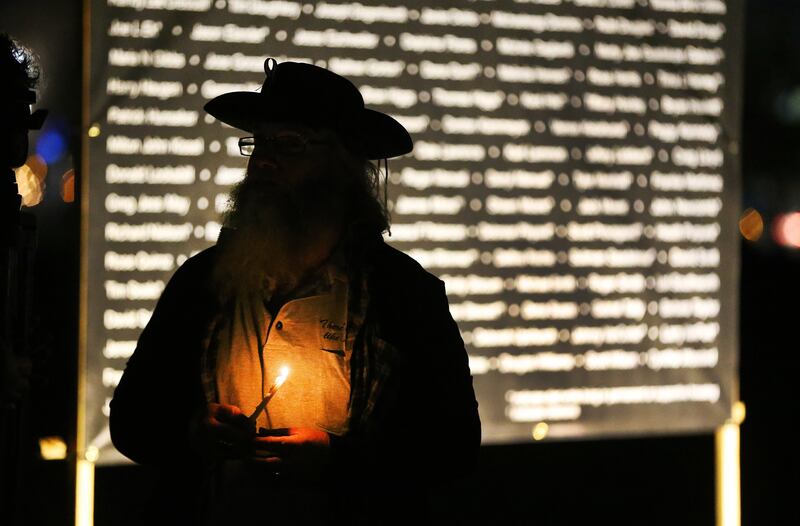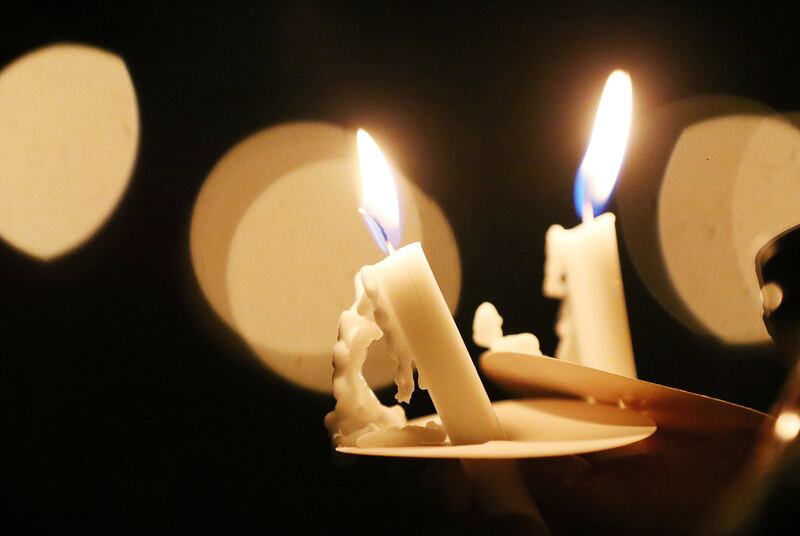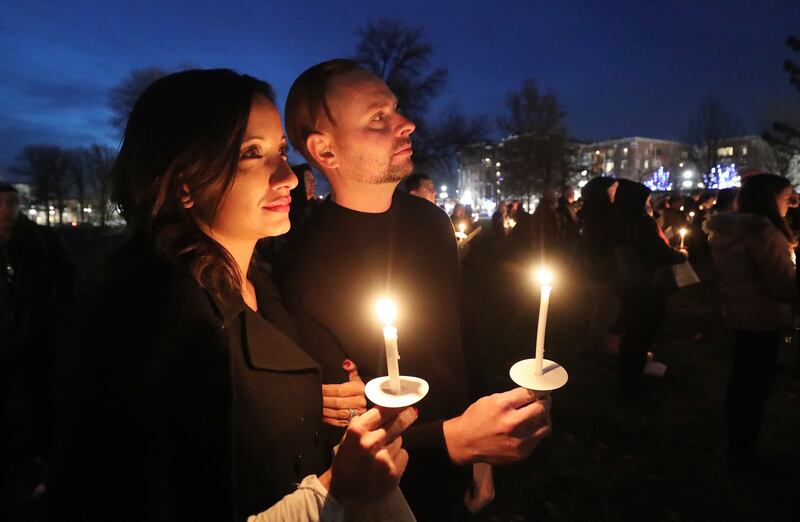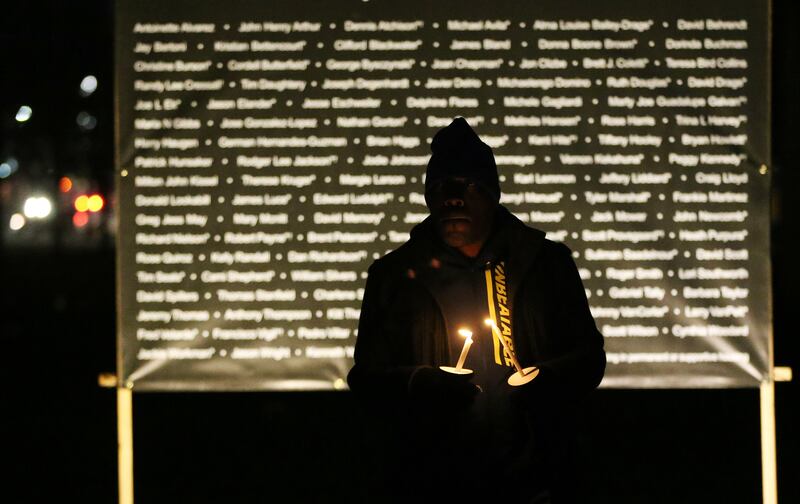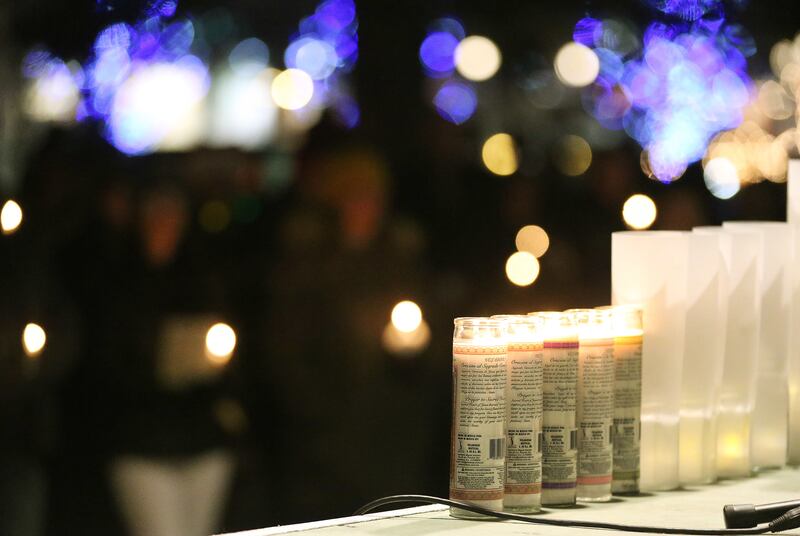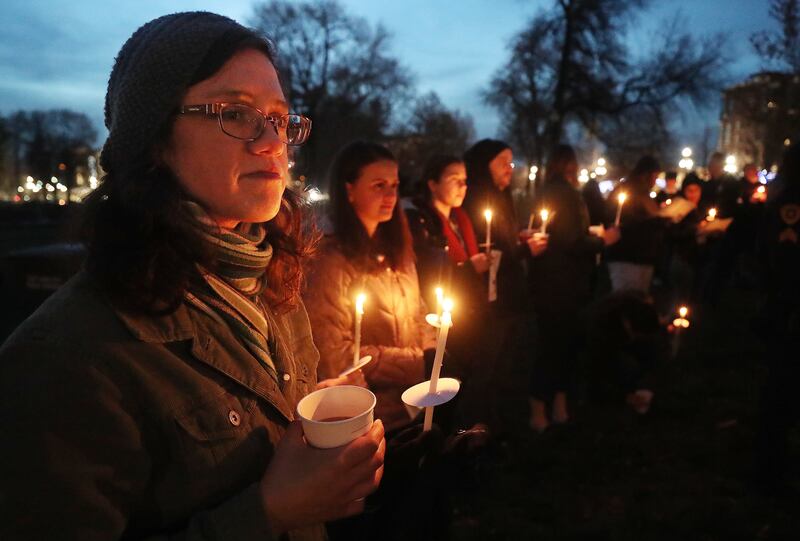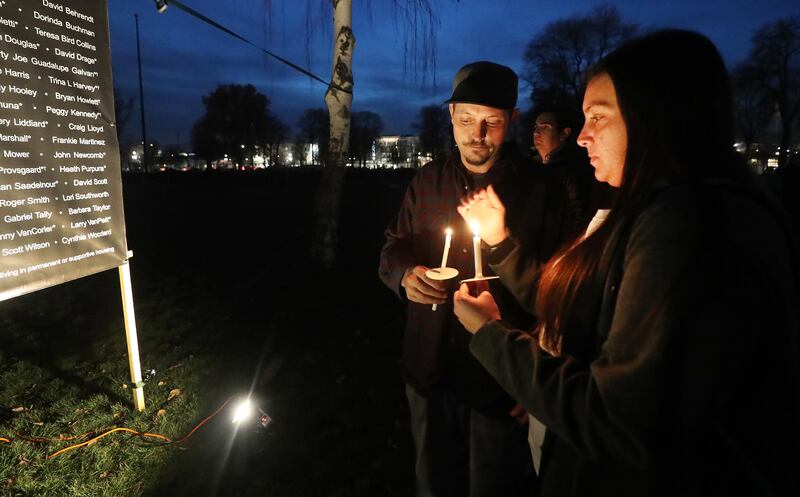SALT LAKE CITY — A white-bearded man in Pioneer Park slightly sways from one foot to the other, standing in the chilly air. A red and white fleece blanket is wrapped around his shoulders.
He carries a large white bag.
But he's not Santa Claus, and the bag isn't filled with gifts. He's homeless, and he gives out laughs and smiles.
When asked how long he's lived on the streets, Michael Chapel responded, with a brogue, "I'm not homeless. I'm a comedian."
But his jokes stilled as he joined more than 100 people gathered for a candlelight vigil Thursday evening in downtown Salt Lake City, a chance to pay respect to the 121 homeless people who died in Utah in 2018.
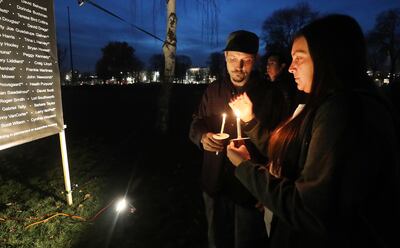
"For many, this will be the only commemoration of their lives, and that's why it is so meaningful," homeless advocate Pamela Atkinson told the somber crowd.
Of those who died this year, 17 were veterans and the average age was about 54 years old, according to organizers.
Rev. Jay Ragsdale, who prayed at the vigil, said, "I knew most of them guys. I knew most of them."
He said he and his wife started visiting the park 10 years ago. "To lose over 120 friends, that's tough. You know, I didn't see 120 just disappear, but I've seen them gradually leave. I didn't know where they went, some of them. But 120. Come on, Salt Lake City. We can make a change in this city."
He said even saying hello to a homeless person, and seeing them, can help make their day better. "We might be the only person that said something to them all day long."
Atkinson said that the people experiencing homelessness, including children, "are subject to the winters and extreme heat in the summers, both posing great health risks. Those on the streets have a more difficult time managing chronic illnesses or injury, and unfortunately, statistically, those on the street die younger than those who are housed."
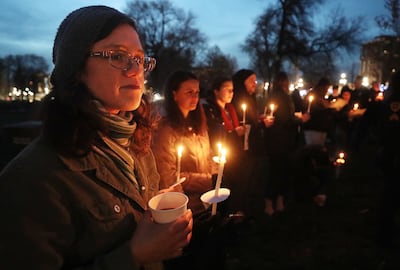
She said the community has programs that are working and newer programs coming, but that the need is still great.
Many at the event held candles, the small flames flickering in the darkening night, while those who spoke talked about helping those who are homeless, especially during the holiday season. Especially during the cold.
Jeff Idle, a student at the Other Side Academy who used to be homeless, told the story of his childhood. "I just as easily could've been one of those names that they're reading off tonight," he said.
He said when he was a child, his mother was a drug addict and he bounced between family members. As he got older, he became rebellious.
"Because no matter how much love and support I had, I still didn't have love and support for myself," Idle said. He started experimenting with drugs and eventually "went off the deep end," living on and off the streets.
But he says he started to question himself until he "decided to do something different." He sought help and joined the Other Side Academy, where through "constant hard work," he changed. "I will never go back to that lifestyle ever again," Idle said, expressing his gratitude to those who helped him "become the man I always wanted to be."
He then conducted the Other Side Academy Choir as they sang an emotional rendition of Linkin Park's song "One More Light" and later "Amazing Grace" for those who were lost.
Chapel held a flickering candle as he watched the vigil, blanket wrapped tight around his shoulders, his white trash bag set on the ground in front of him.
Bernie Hart, who volunteers for a group that does activities like tai chi with homeless people, says that Chapel was just released a few days ago after spending four months in jail.
"That's what happens to our guys — they go to jail and then they come back," Hart explained.
"Michael is cool. He's an artist. We were in front of the police station and we had art stuff set up, and Mike was doing characters of all the other homeless people. Most of the people on the street are characters, and if you get by the surface, really interesting and really cool, smart," Hart said.
"It's typically thought that people on the street are ignorant and have no education, and we're finding just the opposite."

